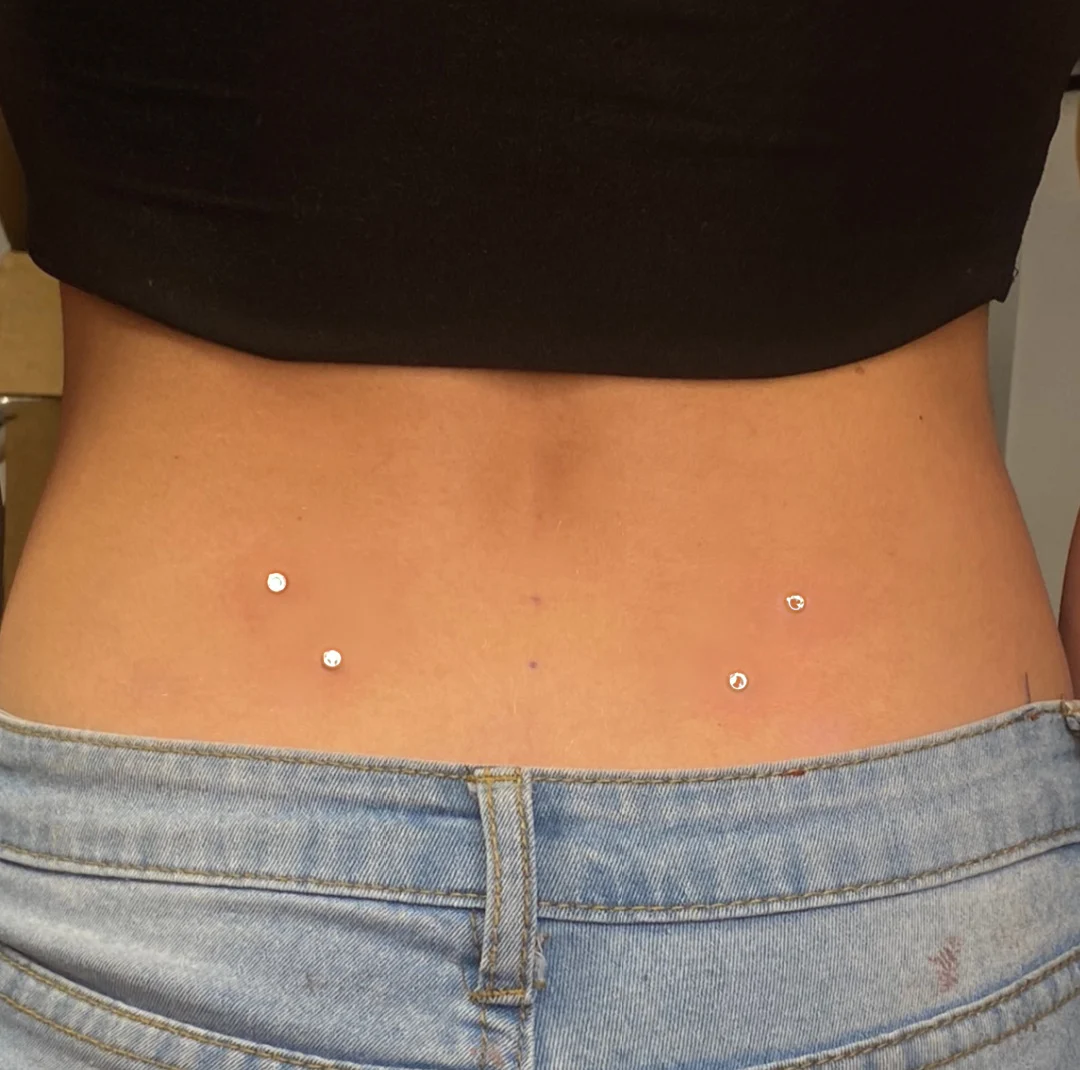When it comes to body modification, dermal piercings are some of the most eye-catching and unique options available. These styles go beyond traditional ear or nose piercings and offer a way to express your personality through bold body art. But with that individuality comes a few extra considerations. If you're thinking about getting a dermal or surface piercing, you're probably wondering: what does it feel like, what’s the difference, and how do I care for it properly? Let’s break it all down so you can decide if this special type of piercing is right for you.

A dermal piercing, also known as a microdermal or single-point piercing, is a type of body piercing that sits flat on the surface of your skin. Unlike traditional piercings that go in one side and out the other, dermal piercings are anchored into the skin with a dermal base (often called an anchor) that rests beneath the surface. A decorative top (the visible part) is then screwed onto the anchor.
Common areas for dermal piercings include:
* Cheekbones
* Collarbones
* Lower back
* Chest
* Hips
* Nape of the neck
The Dermal Experience:
The process of getting a dermal piercing is fairly quick but can feel intense for a few seconds. Your piercer will clean the area, mark the spot, and then use a dermal punch or needle to create a small opening in the skin. The anchor is inserted into the opening and the jewelry is attached.
What it feels like:
Most people describe the sensation as a sharp pinch or pressure that lasts a few seconds. Because it’s only a single entry point (and not a full-through piercing), many say it’s more tolerable than expected.


* Clean twice daily using a saline spray or sterile wound wash. * Avoid twisting or moving the jewelry—it can cause the anchor to shift. * No makeup, lotions, or oils on the piercing site until fully healed. * Be cautious when changing clothes or brushing against the area to avoid snagging. Healing time: Dermals can take 1 to 3 months to heal, though some take longer depending on your skin and lifestyle.
With both types of piercings, you should be aware of common risks: * Rejection or migration (when your body pushes the jewelry out) * Infection (redness, swelling, pus, heat) * Scarring if removed or rejected
With both types of piercings, you should be aware of common risks:
* Rejection or migration (when your body pushes the jewelry out)
* Infection (redness, swelling, pus, heat)
* Scarring if removed or rejected
The best way to reduce risk is to go to an experienced, professional piercer and follow all aftercare instructions. Always use high-quality implant-grade titanium or surgical steel jewelry to reduce the risk of allergic reactions.
If you’re looking for something edgy, elegant, and different from the crowd, a dermal piercing could be the perfect fit. They offer endless creativity in placement and jewelry options and are an amazing way to make a statement.
That said, they do require a bit more commitment. You’ll need to be diligent with cleaning, mindful of your movement, and realistic about the healing process. When done correctly by a professional piercer, they can be beautiful, safe, and long-lasting additions to your look.
Still unsure? Visit a professional studio like Platinum Tattoos & Piercings in San Antonio, TX—we're happy to answer your questions, show you jewelry options, and help you feel confident about your next piercing.
Dermal piercings 101, Class is in session Learn everything you need to know before getting pierced at Platinum Body Piercings in San Antonio Book today!
“Curious about dermal piercings? Learn everything you need to know before getting one at Platinum Tattoos & Piercings in San Antonio, TX. Book today!”
5545 NW Loop 410
San Antonio, TX 78238
Store Hours:
Mon-Thurs 12pm-11pm
Fri – Sat 12pm -12am
Sunday 12pm-7pm
(Piercings Only)
Store Hours:
Mon-Thurs 11am-8pm
Fri – Sat 11am – 9pm
Sun 12pm-6pm